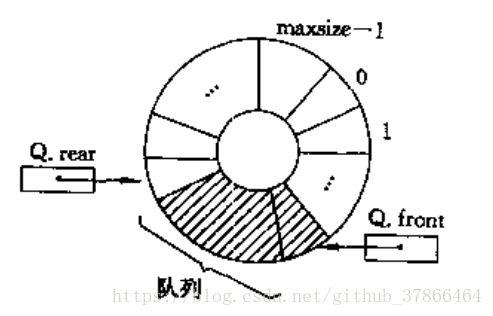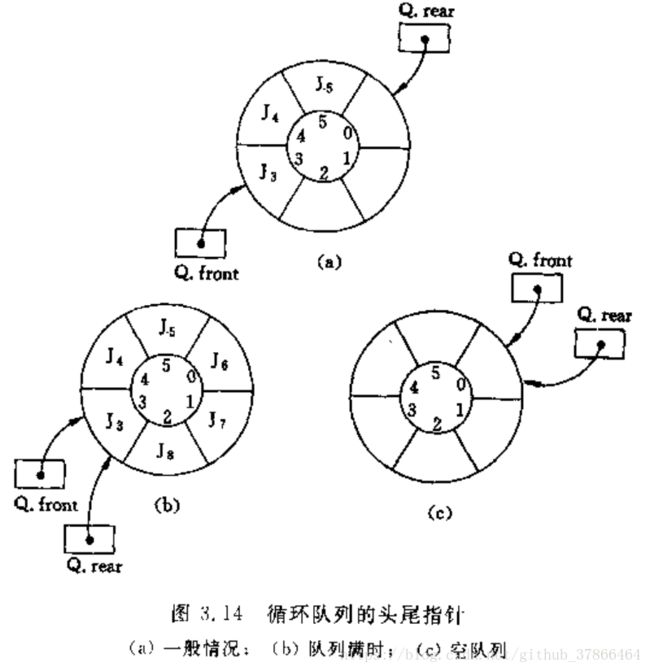- 【云原生技术】k8s是不是不能处理0.1core的CUP配置,必须配置成100mi?
阿寻寻
云原生kubernetes容器
CPU的资源请求和限制特定的表示方式CPU配置的单位配置要求示例在Kubernetes中,CPU的资源请求和限制确实有特定的表示方式。关于你提到的0.1core和100m这两个值,以下是详细的解释:CPU配置的单位KubernetesCPU单位:Kubernetes使用milliCPU(毫核)作为CPU的计量单位。1核CPU=1000milliCPU(m)。例如,0.1核实际上表示为100m(10
- 【云原生技术】K8S更新策略有哪些方式,每种方式的可选必填字段有哪些,详细举例说明
阿寻寻
云原生kubernetes容器
更新策略有哪些方式一、更新策略详细举例1.**RollingUpdate(滚动更新)**说明:必填字段:可选字段:示例:2.**Recreate(重建)**说明:必填字段:可选字段:示例:3.**OnDelete(手动更新)**说明:必填字段:可选字段:示例:总结详细示例小结二、Recreate不可选minReadySeconds吗?Recreate更新策略与minReadySeconds示例总结
- 【软件测试】- 常用的10种测试环境、测试方法、测试工具简介
阿寻寻
软件测试大厂软件测试面试题测试工具
常用测试环境1.本地开发环境(LocalDevelopmentEnvironment/LDE)2.单元测试环境(UnitTestingEnvironment/UTE)3.集成测试环境(IntegrationTestingEnvironment/ITE)4.系统测试环境(SystemTestingEnvironment/STE)5.用户验收测试(UAT)环境(UserAcceptanceTestin
- 【揭秘】图像算法工程师岗位如何进入?
认识祂
人工智能算法图像算法工程师
“图像算法工程师,主要专注于开发图像处理和计算机视觉算法,广泛应用于各行业。本文,我们来揭秘一下他们的日常工作,以及如何成为这一领域的专业人才。”01图像算法工程师的日常工作算法设计与开发图像算法工程师的核心任务是设计和开发算法,以解决特定的图像处理或计算机视觉问题。常见的任务包括:图像分类:使用卷积神经网络(CNN)对图像进行分类,常见算法如ResNet、VGG。目标检测:在图像中定位并标注物体
- 如何判断一个字符串是否是SM4加密
梦魇星虹
Java记录算法java开发语言
如何判断一个字符串是否是SM4加密1、在已知SM4密钥的情况下假设已知SM4密钥为:c1bc47ef2097e4c177e2e3ace52b9601publicclassSM4Utils{publicstaticfinalStringSM4K="c1bc47ef2097e4c177e2e3ace52b9601";/***获取sm4秘钥**@returnsm4秘钥*/publicstaticStri
- 注解不生效之自调用
梦魇星虹
Java记录springjava
注解不生效之自调用1、自调用解释自调用是指在一个类的方法中,直接调用该类的另一个被切面标记的方法,而不是通过Spring容器来调用@ComponentpublicclassMyService{publicvoidmethodA(){//直接调用本类的另一个方法methodBmethodB();}@Transactional//假设这里是一个切面标记,如事务切面publicvoidmethodB()
- 无@RequestBody获取数据为null
爱恰鸡米花
学习java
知识点参考:https://blog.csdn.net/justry_deng/article/details/80972817/今天在做一个post提交数据时,发现后台接收到的数据总为null,这是vue前端代码submitForm(formName){this.ruleForm.pic='/img/singerPic/666.jpg';const_this=this;this.$refs[fo
- 【Python】edge文件转csv文件
海轰Pro
唯有努力Pythonpython开发语言
目录简介问题场景解决方案结语简介Hello!非常感谢您阅读海轰的文章,倘若文中有错误的地方,欢迎您指出~ଘ(੭ˊᵕˋ)੭昵称:海轰标签:程序猿|C++选手|学生简介:因C语言结识编程,随后转入计算机专业,获得过国家奖学金,有幸在竞赛中拿过一些国奖、省奖…已保研学习经验:扎实基础+多做笔记+多敲代码+多思考+学好英语!唯有努力本文仅记录自己感兴趣的内容问题场景存在一个类型为edge的文件需要转化为格
- spring aop
梦魇星虹
Java记录springjava
springaop一、依赖jar包第一种:基于SpringFramework的基本AOP依赖组合org.springframeworkspring-context5.3.10org.springframeworkspring-aspects5.3.10第二种:SpringBoot项目org.springframework.bootspring-boot-starter-aop2.5.5第三种:Sp
- Netty来创建一个TCP服务器,分包上传语音文件的处理
weixin_43833540
tcp/ip服务器网络协议netty
创建一个TCP服务器。我们以在SpringBoot项目中集成Netty来创建一个TCP服务器为例,使用Netty创建一个TCP服务器是常见且可靠的,特别是在需要高性能、低延迟的网络通信时。添加依赖在pom.xml文件中添加Netty的依赖:io.nettynetty-all4.1.68.Final创建Netty服务器配置类创建一个配置类来启动Netty服务器。importio.netty.boot
- 从零开始:使用FunC编写TON智能合约之计数器篇
web3func区块链
在区块链技术的广泛应用中,智能合约无疑是最具前景的领域之一。智能合约允许我们在去中心化的环境中执行可信的交易和协议。TON(TheOpenNetwork)作为新兴的区块链平台,以其高效、可扩展的特性吸引了众多开发者的关注。本文将带你入门TON智能合约的编写,通过实现一个简单的计数器合约,让你掌握使用FunC语言编写智能合约的基本技巧。了解TON与FunC在开始编写智能合约之前,我们需要对TON和F
- 面向 Data+AI 的统一数据目录探索 | Data Infra NO.22 回顾(含资料发布)
数据库
随着生成式人工智能(GenerativeAI)的崛起,从图像生成、自然语言处理到个性化推荐系统,生成式AI技术正迅速改变着各行各业的面貌。而在这场变革背后,数据的管理和治理显得尤为重要。对于企业来说,数据不仅是基础资源,更是构建AI应用和增强业务能力的关键。ApacheGravitino(incubating)与Databend作为数据领域两个知名的开源项目,正通过各自的创新技术和实践,为数据管理
- OpenBuild是什么?如何参与 OpenBuild 开源社区贡献 ?
web3开源以太坊
OpenBuild是什么?OpenBuild是一个面向Web3开发者的开源社区。我们致力于为开发者提供高质量的系统性内容和活动,同时连接Web2和Web3,帮助开发者过渡到去中心化的网络,并通过提供必要的工具和资源,帮助开发者建立结构化系统,构建信任,创造商业机会。4StepsOnboarding More Web2devtoWeb3OpenBuild产品网站:openbuild.xyzDisco
- Databend 实现高效实时查询:深入解读 Dictionary 功能
数据库
作者:洪文丽开源之夏2024“支持ExternalDictionaries”项目参与者东北大学软件工程专业云计算方向大二在读,喜欢挑战自我,尝试新鲜事物背景介绍在大型系统中,数据通常存储在多个不同的数据源中,例如PostgreSQL、MySQL和Redis负责存储在线数据,而Databend和ClickHouse则用于存储分析数据。传统的分析查询方法往往需要同时使用到多种不同的数据,通常通过ETL
- 龙年公仔放送 | EdgeOne网站加速与防护训练营,鹅厂大牛带你实战无忧!
cdn
在数字化时代,网站的性能与安全性直接关系到用户体验和业务连续性,而当前许多网站面临着访问速度慢、加载时间长、易受DDoS攻击、CC攻击等安全威胁的困扰,而EdgeOne作为腾讯云下一代的CDN,集加速与安全防护于一身,已广泛应用于电商、金融、游戏等行业。如何应用EdgeOne,高效玩转网站加速与防护?腾讯云开发者社区携手EdgeOne团队精心打造《EdgeOne一站式玩转网站加速与防护实战营》,鹅
- Go微服务十二 Go使用nacos 注册服务,服务发现
太阳上的雨天
微服务go微服务nacos
创作不易感谢支持。一条主写Go和PHP的小菜鸟。平常有时间喜欢自己写点东西,如有不对的地方,欢迎大佬指点。个人博客:太阳上的雨天地址:http://blog.caixiaoxin.cn善于分享,希望有助他人.非常感谢各位大佬的关注和支持Go使用阿里nacos管理服务注册和发现,思路Demo连接nacosfuncInitNacos()*nacosRF{//return&nacosRF{}d:=&na
- 2025年计算机专业毕业设计选题推荐 速存
小晓程序设计
课程设计javaspringboot毕业设计
2025最新计算机专业毕业设计选题推荐博主介绍CSDN特邀作者、博客专家、CSDN新星计划导师Java领域优质创作者,荣获“博客之星”称号掘金、华为云、阿里云、InfoQ等平台优质作者专注于Java技术及学生毕业项目实战指导高校教师/讲师,擅长同行交流合作文末获取源码联系方式主要内容SpringBoot、Vue、SSM框架应用HLMT(假设为某特定技术或框架)、Jsp、PHP、Node.js、Py
- Databend 产品月报(2024年8月)
数据库
很高兴为您带来Databend2024年8月的最新更新、新功能和改进!我们希望这些增强功能对您有所帮助,并期待您的反馈。KafkaConnectSinkConnector插件我们推出了一种将Kafka连接到Databend的新方式:databend-kafka-connect,这是一个KafkaConnectsinkconnector插件。该插件支持AppendOnly和Upsert两种写入模式,
- centos安装python3
XMYX-0
centoslinuxpython
目录介绍安装依赖下载python安装包安装python建立软连接python3加入PATH变量验证python3安装的一些库psutil模块安装源码安装psutilpip安装windows上安装IPy的安装dns模块安装疑难杂症解决python上下键无法使用的问题安装pip以及setuptools安装pip测试:其他安装node以及pm2介绍Python是一种广泛应用的编程语言,原由荷兰国家数学与
- springboot初始化数据库+druid解密
1.yaml配置数据库连接配置#数据源配置spring.datasource.username=beebotlarkspring.datasource.password=WDShxRWTLSuKM6ucPN4E8hi0YWglium26wJVKitxRpzN2sopztgZpvgi4YFnuPXrAiLPMjuzgYK13we5SEwIHQ==spring.datasource.url=local
- threejs 复习笔记
three.js
import*asTHREEfrom'https://unpkg.com/
[email protected]/build/three.module.js'import{OrbitControls}from'https://github.com/mrdoob/three.js/blob/master/examples/jsm/controls/OrbitControls.js'import{OrbitCon
- python把列表插入列表
Zoert
python相关学习资料:https://edu.51cto.com/video/4102.htmlhttps://edu.51cto.com/video/1158.htmlhttps://edu.51cto.com/video/4645.htmlPython中列表的嵌套与操作在Python编程中,列表(List)是一种非常重要的数据结构,它不仅可以存储数据,还可以进行各种操作,如插入、删除、排序
- Java中的注解 @valid @RequestBody @ApiOperation @Builder@NoArgsConstructor@AllArgsConstructor@Data
xt_
javajava开发语言
1、@valid在Java中,特别是在Spring框架中,@Valid是一个常用的注解,用于在方法参数上执行BeanValidation。BeanValidation是JavaEE的一部分,它提供了一组用于验证JavaBean属性的注解。当你使用@Valid注解时,Spring会检查标注了该注解的对象的属性,以确保它们满足指定的验证规则。这里有一个简单的例子:首先,定义一个简单的实体类,并使用Be
- 300行ABAP代码实现一个最简单的区块链原型
在多模态模型的架构上,ChatGPT的绘图能力主要依赖以下几个核心组件:跨模态编码器(Cross-ModalEncoder):跨模态编码器的作用是将文本和图像的特征进行对齐。GPT可以将用户输入的文本描述转换为文本特征表示,然后利用跨模态编码器将这些特征映射到图像特征空间。这种方式确保模型能够理解描述性语言中不同细节是如何与图像特征对应的。
- SGLang安装教程,部署你的大模型,性能比vllm好,实现张量并行,数据并行,加快推理速度,亲测效果好。
张登杰踩
人工智能结对编程python
目前大模型部署工具主要是vllm,最近出现了SGLang,很多新开源大模型都支持SGLang的部署推理,例如deepseek-R1,Qwen2.5,Mistral,GLM-4,MiniCPM3,InternLM2,Llama3.2等。代码:GitHub-sgl-project/sglang:SGLangisafastservingframeworkforlargelanguagemodelsand
- python列表同时添加多个元素_如何将两个列表中的元素一起添加(how do i add elements from two lists together)...
weixin_39627481
如何将两个列表中的元素一起添加(howdoiaddelementsfromtwoliststogether)我有两个这样的列表:l_1n-values...List不是专业的,所以专业级别没有多大意义。只有Array是专门的。classPoly[T](valcoef:List[T]){def+(op:Poly[T])(implicitadder:(T,T)=>T)=newPoly(Poly.com
- 【全开源】智慧小区物业管理小程序FastAdmin+UniApp
现任明教教主~
小程序uni-app
基于FastAdmin+UniApp开发的智慧小区物业管理小程序,包含小区物业缴费、房产管理、在线报修、业主活动报名、在线商城等功能。为物业量身打造的智慧小区运营管理系统,贴合物业工作场景,轻松提高物业费用收缴率,更有功能模块个性化组合,助力物业节约成本高效运营。功能特性1.房产管理可批量添加房产,后台轻松管理小区房产。2.户主管理Excel批量导入户主同时绑定房产,帮助物业管理户主信息。3.物业
- Centos7在线快速安装python3
ascarl2010
Linux系统运维linuxpython
首先安装依赖包:yum-yinstallgcczlib-develbzip2-developenssl-develncurses-develsqlite-develreadline-develtk-devellibffi-develxz-devel使用国内镜像源下载Python源码(以Python3.8.12为例):wgethttps://mirrors.huaweicloud.com/pytho
- c++瓷砖
橙子亿
c++开发语言
今天的题目叫“瓷砖”,是“DFS深度优先搜索递归”一类的。题目描述在一个w×h的矩形广场上,每一块1x1的地面都铺设了红色或黑色的瓷砖。小谢同学站在某一块黑色的瓷砖上,他可以从此处出发,移动到上、下、左、右四个相邻的且是黑色的瓷砖上。现在他想知道,通过重复上述移动所能经过的黑色瓷砖数。输入第一行为两个数h和w,2≤w,h≤50,之间有一个空格隔开。以下为一个w行h列的二维字符矩阵,每个字符为“.”
- 关于大一上的总结
Rinai_R
对过去的总结与反思学习经验分享
大一上总结前言源于学长们都喜欢写总结,今晚也正好听见一首有点触动心灵的歌,深有感慨,故来此写下这篇总结正文1.暑假前的准备暑假之前姑且还是学习了基本的C语法,大概是到了结构体的地方,进度很慢,主要是我在家确实很懈怠,而且确实也有其他不少的事情。2.军训之后到10月22日我在学校的代码之旅是在军训之后开始的,军训完本来想在寝室学习编程的,却发现室友都在go/瓦/王者启动…还是有点吵,于是转战到了图书
- 基本数据类型和引用类型的初始值
3213213333332132
java基础
package com.array;
/**
* @Description 测试初始值
* @author FuJianyong
* 2015-1-22上午10:31:53
*/
public class ArrayTest {
ArrayTest at;
String str;
byte bt;
short s;
int i;
long
- 摘抄笔记--《编写高质量代码:改善Java程序的151个建议》
白糖_
高质量代码
记得3年前刚到公司,同桌同事见我无事可做就借我看《编写高质量代码:改善Java程序的151个建议》这本书,当时看了几页没上心就没研究了。到上个月在公司偶然看到,于是乎又找来看看,我的天,真是非常多的干货,对于我这种静不下心的人真是帮助莫大呀。
看完整本书,也记了不少笔记
- 【备忘】Django 常用命令及最佳实践
dongwei_6688
django
注意:本文基于 Django 1.8.2 版本
生成数据库迁移脚本(python 脚本)
python manage.py makemigrations polls
说明:polls 是你的应用名字,运行该命令时需要根据你的应用名字进行调整
查看该次迁移需要执行的 SQL 语句(只查看语句,并不应用到数据库上):
python manage.p
- 阶乘算法之一N! 末尾有多少个零
周凡杨
java算法阶乘面试效率
&n
- spring注入servlet
g21121
Spring注入
传统的配置方法是无法将bean或属性直接注入到servlet中的,配置代理servlet亦比较麻烦,这里其实有比较简单的方法,其实就是在servlet的init()方法中加入要注入的内容:
ServletContext application = getServletContext();
WebApplicationContext wac = WebApplicationContextUtil
- Jenkins 命令行操作说明文档
510888780
centos
假设Jenkins的URL为http://22.11.140.38:9080/jenkins/
基本的格式为
java
基本的格式为
java -jar jenkins-cli.jar [-s JENKINS_URL] command [options][args]
下面具体介绍各个命令的作用及基本使用方法
1. &nb
- UnicodeBlock检测中文用法
布衣凌宇
UnicodeBlock
/** * 判断输入的是汉字 */ public static boolean isChinese(char c) { Character.UnicodeBlock ub = Character.UnicodeBlock.of(c);
- java下实现调用oracle的存储过程和函数
aijuans
javaorale
1.创建表:STOCK_PRICES
2.插入测试数据:
3.建立一个返回游标:
PKG_PUB_UTILS
4.创建和存储过程:P_GET_PRICE
5.创建函数:
6.JAVA调用存储过程返回结果集
JDBCoracle10G_INVO
- Velocity Toolbox
antlove
模板toolboxvelocity
velocity.VelocityUtil
package velocity;
import org.apache.velocity.Template;
import org.apache.velocity.app.Velocity;
import org.apache.velocity.app.VelocityEngine;
import org.apache.velocity.c
- JAVA正则表达式匹配基础
百合不是茶
java正则表达式的匹配
正则表达式;提高程序的性能,简化代码,提高代码的可读性,简化对字符串的操作
正则表达式的用途;
字符串的匹配
字符串的分割
字符串的查找
字符串的替换
正则表达式的验证语法
[a] //[]表示这个字符只出现一次 ,[a] 表示a只出现一
- 是否使用EL表达式的配置
bijian1013
jspweb.xmlELEasyTemplate
今天在开发过程中发现一个细节问题,由于前端采用EasyTemplate模板方法实现数据展示,但老是不能正常显示出来。后来发现竟是EL将我的EasyTemplate的${...}解释执行了,导致我的模板不能正常展示后台数据。
网
- 精通Oracle10编程SQL(1-3)PLSQL基础
bijian1013
oracle数据库plsql
--只包含执行部分的PL/SQL块
--set serveroutput off
begin
dbms_output.put_line('Hello,everyone!');
end;
select * from emp;
--包含定义部分和执行部分的PL/SQL块
declare
v_ename varchar2(5);
begin
select
- 【Nginx三】Nginx作为反向代理服务器
bit1129
nginx
Nginx一个常用的功能是作为代理服务器。代理服务器通常完成如下的功能:
接受客户端请求
将请求转发给被代理的服务器
从被代理的服务器获得响应结果
把响应结果返回给客户端
实例
本文把Nginx配置成一个简单的代理服务器
对于静态的html和图片,直接从Nginx获取
对于动态的页面,例如JSP或者Servlet,Nginx则将请求转发给Res
- Plugin execution not covered by lifecycle configuration: org.apache.maven.plugin
blackproof
maven报错
转:http://stackoverflow.com/questions/6352208/how-to-solve-plugin-execution-not-covered-by-lifecycle-configuration-for-sprin
maven报错:
Plugin execution not covered by lifecycle configuration:
- 发布docker程序到marathon
ronin47
docker 发布应用
1 发布docker程序到marathon 1.1 搭建私有docker registry 1.1.1 安装docker regisry
docker pull docker-registry
docker run -t -p 5000:5000 docker-registry
下载docker镜像并发布到私有registry
docker pull consol/tomcat-8.0
- java-57-用两个栈实现队列&&用两个队列实现一个栈
bylijinnan
java
import java.util.ArrayList;
import java.util.List;
import java.util.Stack;
/*
* Q 57 用两个栈实现队列
*/
public class QueueImplementByTwoStacks {
private Stack<Integer> stack1;
pr
- Nginx配置性能优化
cfyme
nginx
转载地址:http://blog.csdn.net/xifeijian/article/details/20956605
大多数的Nginx安装指南告诉你如下基础知识——通过apt-get安装,修改这里或那里的几行配置,好了,你已经有了一个Web服务器了。而且,在大多数情况下,一个常规安装的nginx对你的网站来说已经能很好地工作了。然而,如果你真的想挤压出Nginx的性能,你必
- [JAVA图形图像]JAVA体系需要稳扎稳打,逐步推进图像图形处理技术
comsci
java
对图形图像进行精确处理,需要大量的数学工具,即使是从底层硬件模拟层开始设计,也离不开大量的数学工具包,因为我认为,JAVA语言体系在图形图像处理模块上面的研发工作,需要从开发一些基础的,类似实时数学函数构造器和解析器的软件包入手,而不是急于利用第三方代码工具来实现一个不严格的图形图像处理软件......
&nb
- MonkeyRunner的使用
dai_lm
androidMonkeyRunner
要使用MonkeyRunner,就要学习使用Python,哎
先抄一段官方doc里的代码
作用是启动一个程序(应该是启动程序默认的Activity),然后按MENU键,并截屏
# Imports the monkeyrunner modules used by this program
from com.android.monkeyrunner import MonkeyRun
- Hadoop-- 海量文件的分布式计算处理方案
datamachine
mapreducehadoop分布式计算
csdn的一个关于hadoop的分布式处理方案,存档。
原帖:http://blog.csdn.net/calvinxiu/article/details/1506112。
Hadoop 是Google MapReduce的一个Java实现。MapReduce是一种简化的分布式编程模式,让程序自动分布到一个由普通机器组成的超大集群上并发执行。就如同ja
- 以資料庫驗證登入
dcj3sjt126com
yii
以資料庫驗證登入
由於 Yii 內定的原始框架程式, 採用綁定在UserIdentity.php 的 demo 與 admin 帳號密碼: public function authenticate() { $users=array( &nbs
- github做webhooks:[2]php版本自动触发更新
dcj3sjt126com
githubgitwebhooks
上次已经说过了如何在github控制面板做查看url的返回信息了。这次就到了直接贴钩子代码的时候了。
工具/原料
git
github
方法/步骤
在github的setting里面的webhooks里把我们的url地址填进去。
钩子更新的代码如下: error_reportin
- Eos开发常用表达式
蕃薯耀
Eos开发Eos入门Eos开发常用表达式
Eos开发常用表达式
>>>>>>>>>>>>>>>>>>>>>>>>>>>>>>>>>>>
蕃薯耀 2014年8月18日 15:03:35 星期一
&
- SpringSecurity3.X--SpEL 表达式
hanqunfeng
SpringSecurity
使用 Spring 表达式语言配置访问控制,要实现这一功能的直接方式是在<http>配置元素上添加 use-expressions 属性:
<http auto-config="true" use-expressions="true">
这样就会在投票器中自动增加一个投票器:org.springframework
- Redis vs Memcache
IXHONG
redis
1. Redis中,并不是所有的数据都一直存储在内存中的,这是和Memcached相比一个最大的区别。
2. Redis不仅仅支持简单的k/v类型的数据,同时还提供list,set,hash等数据结构的存储。
3. Redis支持数据的备份,即master-slave模式的数据备份。
4. Redis支持数据的持久化,可以将内存中的数据保持在磁盘中,重启的时候可以再次加载进行使用。
Red
- Python - 装饰器使用过程中的误区解读
kvhur
JavaScriptjqueryhtml5css
大家都知道装饰器是一个很著名的设计模式,经常被用于AOP(面向切面编程)的场景,较为经典的有插入日志,性能测试,事务处理,Web权限校验, Cache等。
原文链接:http://www.gbtags.com/gb/share/5563.htm
Python语言本身提供了装饰器语法(@),典型的装饰器实现如下:
@function_wrapper
de
- 架构师之mybatis-----update 带case when 针对多种情况更新
nannan408
case when
1.前言.
如题.
2. 代码.
<update id="batchUpdate" parameterType="java.util.List">
<foreach collection="list" item="list" index=&
- Algorithm算法视频教程
栏目记者
Algorithm算法
课程:Algorithm算法视频教程
百度网盘下载地址: http://pan.baidu.com/s/1qWFjjQW 密码: 2mji
程序写的好不好,还得看算法屌不屌!Algorithm算法博大精深。
一、课程内容:
课时1、算法的基本概念 + Sequential search
课时2、Binary search
课时3、Hash table
课时4、Algor
- C语言算法之冒泡排序
qiufeihu
c算法
任意输入10个数字由小到大进行排序。
代码:
#include <stdio.h>
int main()
{
int i,j,t,a[11]; /*定义变量及数组为基本类型*/
for(i = 1;i < 11;i++){
scanf("%d",&a[i]); /*从键盘中输入10个数*/
}
for
- JSP异常处理
wyzuomumu
Webjsp
1.在可能发生异常的网页中通过指令将HTTP请求转发给另一个专门处理异常的网页中:
<%@ page errorPage="errors.jsp"%>
2.在处理异常的网页中做如下声明:
errors.jsp:
<%@ page isErrorPage="true"%>,这样设置完后就可以在网页中直接访问exc


